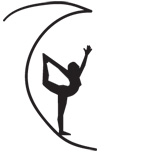
Along the Garden Route in South Africa we are blessed with an abundance of beautiful beaches, lakes, rivers and lagoons. The water temperatures are generally warm to moderate throughout the year, making them ideal for open water swimming.
I have done a fair bit of kitesurf teaching and a few downwind sessions across Swartvlei lake near Sedgefield. It has quite a few shallow water sand banks around the edges and some really deep sections in the midst. It’s a vast and beautiful dark water lake that flows into a nearby lagoon and is fed by a few rivers. As a result it is moderately tidal with slightly lower salinity than the sea.
For some time I had been thinking about swimming a route across the lake and recently I got around to it. I arranged a pick up from one side and set off from the other. The first few hundred metres involved a bit of wading as it was simply too shallow to swim. The water felt a little colder than usual but OK to start with. As I got going I was hit with mild ice-cream headaches and had to keep lifting my head. “This is going to be painful,” I thought to myself! Fortunately the headaches were minor and subsided quickly as I adjusted to the water and warmed up while swimming in my wetsuit.
Swimming across a lake offers a great sense of freedom. I had not been swimming that much since the last Summer so it took a while to get a comfortable stroke and rhythm going. Regular surfing means that my swim fitness is reasonable as the paddling technique is very similar and not much kicking is required for distance swimming. I find that it is best to breathe every third stroke to alternate the head movements when swimming longer distances. This helps to balance the body and maintaining direction. The longer time afforded to exhalation is also calming and good for a nice gliding stroke.
Although I had heard from a kayaker friend that this route was 3km, I was not quite convinced of the distance and suspected that it might be less. The last time I had done much distance of continuous swimming was probably the Midmar Mile in my school days. I found it quite difficult to estimate the time that it would take so I decided to radically overestimate it and prepare to swim for about 2 hours. Psychologically I find that it is always better to exaggerate things like this. I do this on distance walking and hiking too. I keeps one prepared and delays any destructive distractions like thinking “am I nearly there yet?” This allows you to focus more on the breath and stroke and enjoying gliding in the present moment.
I ended up finishing in about 50 minutes, feeling quite refreshed but a little cold after leaving the water. I could comfortably have gone on for another hour or so. Looking at the route on a map it does appear to be roughly 3km.
Through the experience I learnt a couple of things that will be helpful in future:
1. Swim with the sun behind you if at all possible. I started in the afternoon and swam into the setting sun. The glare on the water was sometimes quite intense when looking at the destination. A morning start or swimming the other way would have been a better idea.
2. Picking a good, high landmark is really important. Swimming puts your head and body much lower in the water than surfing, kitesurfing and most other surface water sports. Having crossed this route before with kites and paddling on surf boards during lessons, I did not know how tricky it would be to quickly and accurately spot the destination when swimming. As a result I went a bit off course at one point and had to pause for long moments with head raised to confirm the route.
It was an enjoyable swim and it feels good to have completed it. I am keen to do more open water swimming and would like to try the Island Lake and Knysna Lagoon some time soon. This kind of swimming is great for all round confidence and fitness and improves comfort and relaxation during surfing and kitesurfing. There will always be times when conditions get a bit tricky, a leash snaps while surfing or a kite goes down and won’t relaunch. Swimming confidence make these events simple equipment failures rather than nerve wracking or scary disasters. Occasional equipment issues are just another opportunity to enjoy swimming.
If anyone is keen to join or meet for a fun training or social swim, do get in touch by email.

